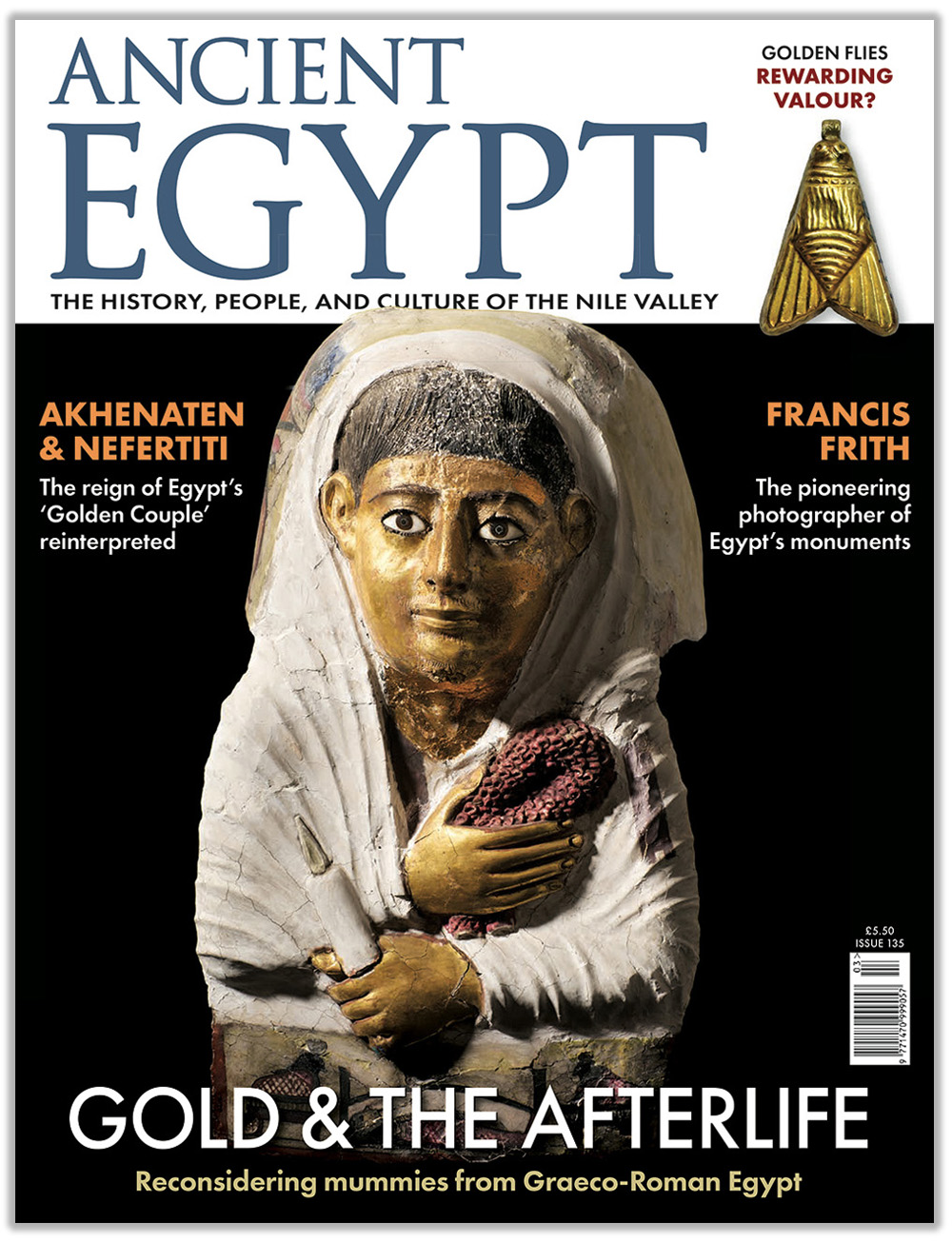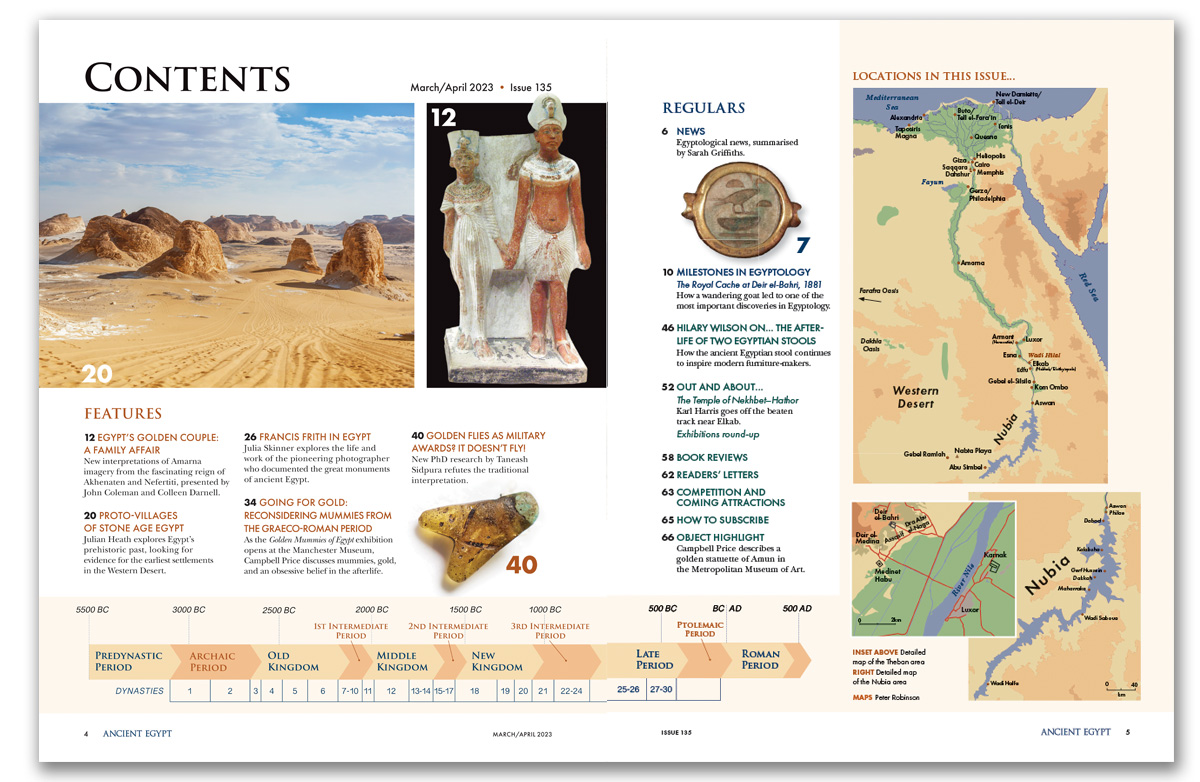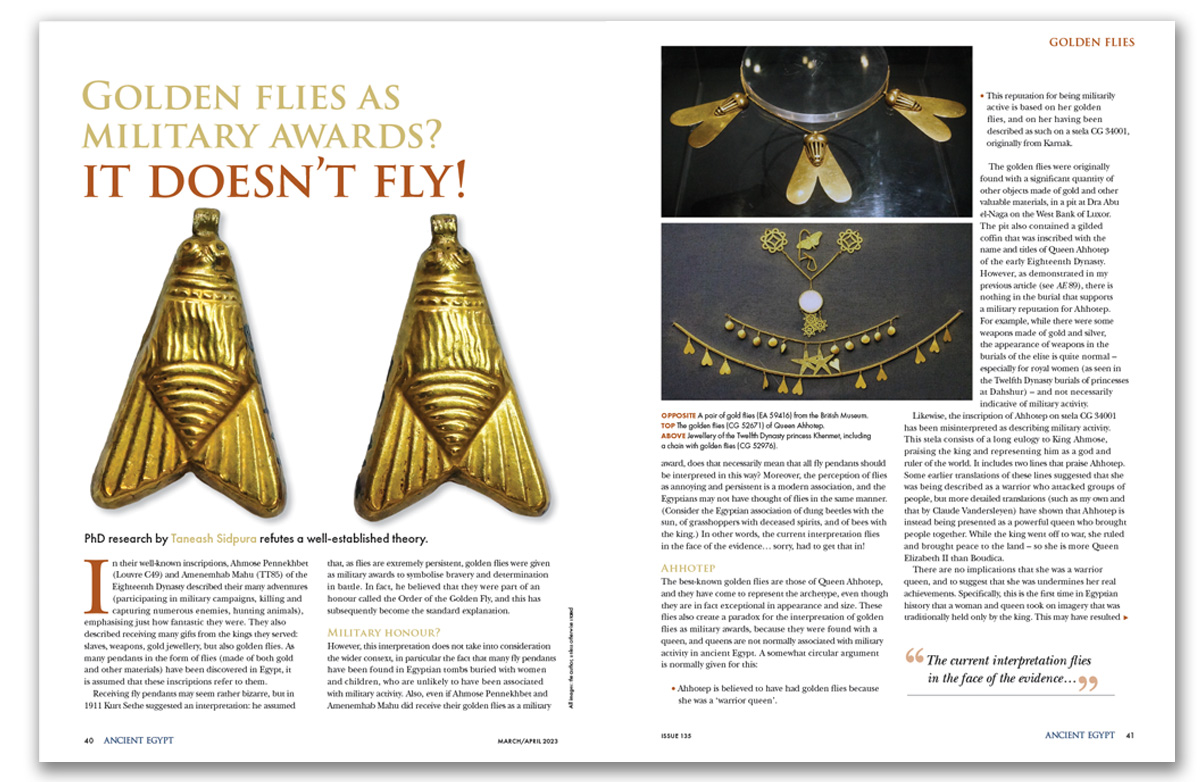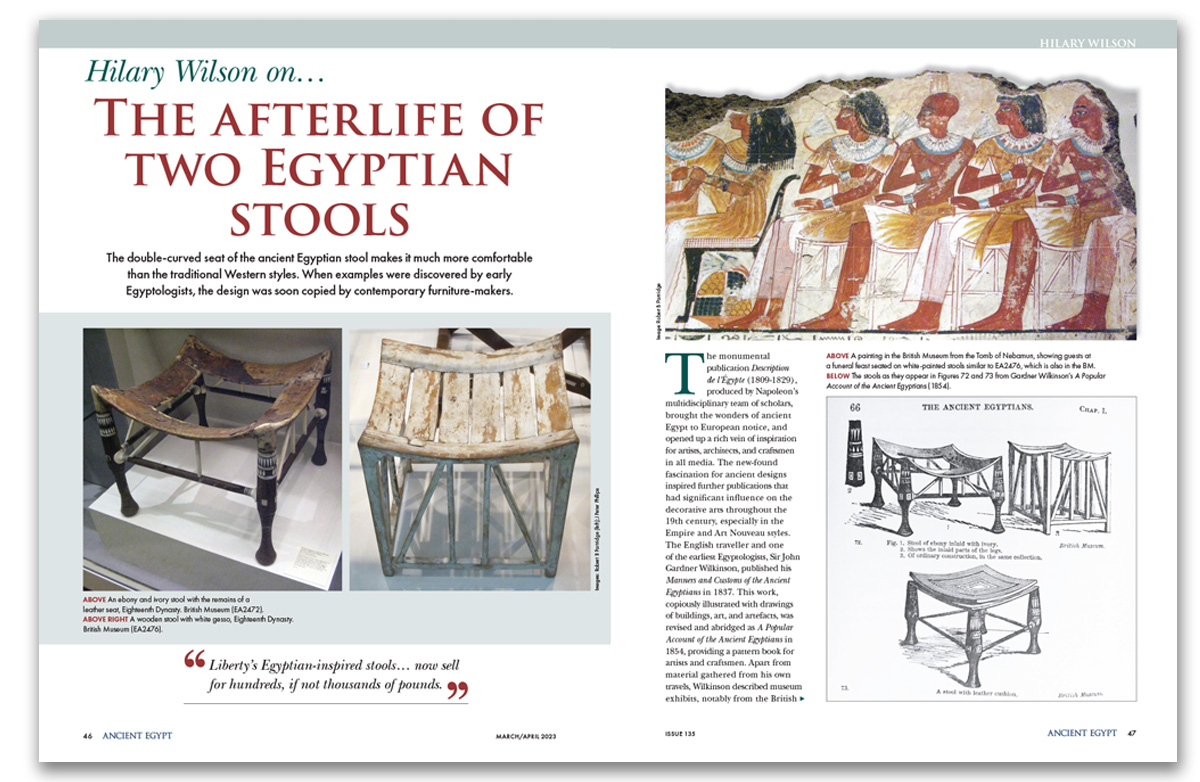As with any discipline that has its roots centuries ago, Egyptology has its myths: theories that fitted the facts as they were known at that time, but which have since become untenable in the light of new discoveries. Since the original ideas have been immortalised in textbooks, they become accepted and unchallenged.
In the previous issue, for example, Bob Brier presented convincing proof that Tutankhamun was a warrior pharaoh rather than a sickly child, and in this issue Taneash Sidpura presents the results of his PhD research into ‘golden flies’, particularly those found in the grave goods of Queen Ahhotep of the Seventeenth Dynasty. Since flies are persistent insects that continue to pester humans, even when swatted away, it was selfevident that golden flies were awards presented by pharaoh to warriors who had proved their bravery in battle. This meant, of course, that Queen Ahhotep must have been a ‘warrior queen’. The problem with this, as Taneash points out, is that other evidence paints Ahhotep as a peaceful conciliator. Even more convincingly, most of the surviving ‘flies’ (made of various materials, not only gold) have been found associated with women and children rather than men of fighting age. So if not awards for valour, what were they? Turn to p.40 to find out!
From Predynastic proto-villages in the Western Desert, though the Middle Kingdom jewellery of Queen Ahhotep and the ever-popular New Kingdom topic of Akhenaten and Nefertiti, to Graeco-Roman golden mummies, this issue covers the wide sweep of ancient Egyptian history, and even ventures towards the present day with Egyptianising furniture. Something for everyone!





